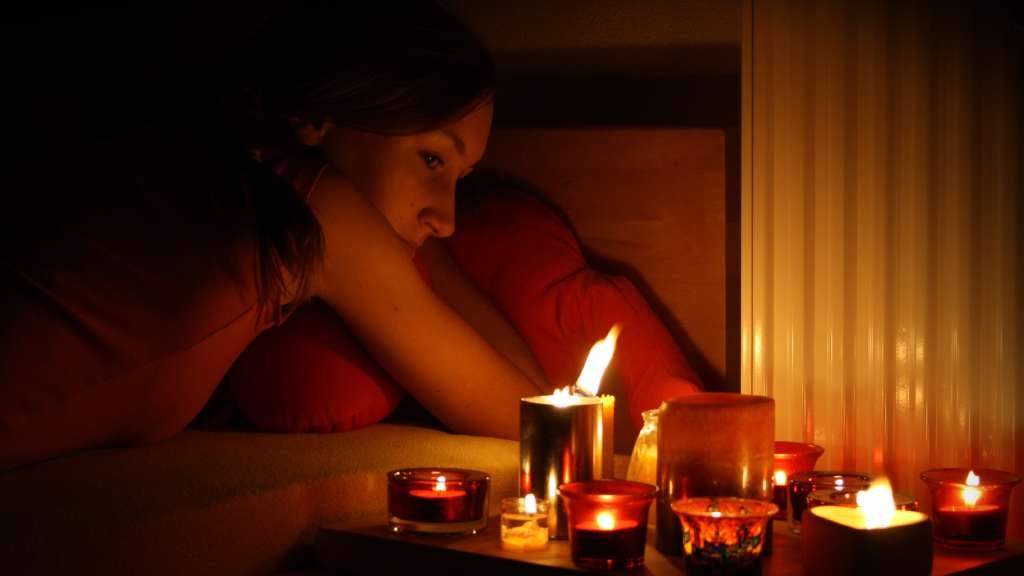The most common causes of house fires

Household fires can strike suddenly, turning lives upside down and causing devastating loss. In New South Wales alone, fire and rescue respond to over 4,500 residential fires each year, many of which can been prevented with the right precautions.been prevented with the right precautions.
The key to protecting your loved ones and property is understanding what causes house fires and how to reduce the risks. To shed light on the most common household fire hazards, we spoke to two leading experts: Jason Rowe, Fire Safety Expert and Founder of Hello Electrical, and Vithyaa Thavapalan, Senior Forensic Fire Investigator and CEO of Forensic Origin and Cause.
From an unattended stove in the kitchen to faulty electrical, fire hazards exist in places you may not expect. By learning where fires are most likely to start in the home and how to prevent them, you can discover how to protect what matters most to your household.
Where do house fires usually start?
Fires can break out in any part of the home. However, some rooms have a higher risk of fire than others.
Kitchens, bedrooms, and living rooms all contain potential fire hazards, from cooking appliances to overloaded power boards. Understanding these common hotspots – and how often fires occur in them – can help you take the necessary precautions to keep your household safe.
Kitchen fires
The kitchen is one of the most common places for household fires to start, often due to unattended cooking, grease fires, or flammable objects placed too close to heat sources. A moment’s distraction – like stepping away from a frying pan or leaving a dish towel near an open flame – can quickly turn into a dangerous situation.
Jason provides a handy tip:
“Grease fires are one of the most dangerous types of house fires because they spread quickly and cannot be put out with water. In an emergency, there is no time to search through cluttered drawers or run to another room. Fires double in size within seconds, and any delay in grabbing the right tool increases the chance of flames spreading beyond control. Keeping a fire blanket mounted on a nearby wall or in a clearly accessible cupboard ensures it can be reached instantly.”
Bedroom and bathroom fires
Bedrooms and bathrooms can contain a surprising number of fire hazards, from electric blankets and space heaters to hairdryers and charging devices. Overloaded power points, faulty wiring, and unattended candles can further increase this risk. A bedroom fire can spread rapidly, especially if flammable materials like bedding or curtains are nearby.
Tip: Always extinguish candles before bed, keep space heaters at least a metre away from flammable objects, and unplug devices when they’re not in use.
Laundry fires
Laundry rooms may not seem like a fire hazard, but clothes dryers are a common cause of household fires. Lint build-up in filters and dryer ducts restricts airflow, causing the appliance to overheat and potentially ignite. Without proper maintenance, a routine load of laundry could spark a dangerous dryer duct fire.
Living room and office fires
Living rooms and home offices usually have multiple electrical devices, making them high-risk areas for electrical fires. Overloaded power boards, faulty wiring, and overheating appliances can all trigger a fire, while candles, fireplaces, and smoking materials add additional hazards.
Jason Rowe explains:
“Household wiring is designed to handle a specific amount of current. Overloading power boards forces excess electricity through the circuit, causing heat to build up. If insulation burns away, exposed wires can arc and create sparks, igniting fires inside walls.”
Tip: Check power cords regularly for fraying or signs of damage, and avoid “stringing” power boards (plugging one into another), as this significantly increases the risk of overloading circuits.
Outdoor fires and bushfires
From backyard barbeques to the threat of bushfires, outdoor spaces come with their own fire risks. BBQs, fire pits, and outdoor heaters should be regularly serviced to prevent gas leaks or equipment malfunctions. Plus, flammable materials like dry leaves, garden waste, and wooden furniture should be kept well away from open flames or heat sources.
For those living in bushfire-prone areas, preparation is essential. Embers can travel kilometres ahead of a fire front, igniting homes and properties unexpectedly. Clearing gutters, trimming overhanging branches, and having an emergency evacuation plan in place can make all the difference.
Tip: Stay up to date with bushfire warnings in your area and read our guide to learn how to prepare your home for bushfire season.
What are the common causes of house fires?
House fires often start from everyday household activities and appliances. While some causes are well-known, others, such as overloaded power boards or clogged dryer vents, may not be as obvious. Here’s a closer look at some of the most common fire hazards and how to mitigate them.
Electrical fires
Electrical fires are one of the more prominent type of household fires, often triggered by overloaded power boards, aging wiring, or leaving devices charging unattended. According to fire investigator Vithyaa Thavapalan, these are some of the most common fire hazards she encounters:
"The most common things I see are fires involving batteries left on charge unattended and also overloaded power boards (sometimes stringing power boards). Another issue I frequently see is people continuing to use old electrical equipment that has deteriorating wiring. Frayed or damaged cords can spark and cause fires, especially when placed near flammable materials.”
If your circuit breaker trips frequently or you notice flickering lights or discoloured power outlets, these could be signs of faulty wiring. Jason Rowe suggests installing additional wall outlets instead of overloading power boards:
"If there are not enough outlets in a room, a licensed electrician should install additional ones that are properly wired to handle the electrical load.”
Heaters and open fires
Portable heaters, radiators, and open fireplaces can quickly ignite flammable materials if placed too close to curtains, furniture, or bedding. Cooking appliances and barbeques also pose a risk if left unattended, particularly in outdoor settings where wind can spread embers.
Tip: Always maintain at least a one-metre safety zone around heaters and fireplaces. Clean chimneys and barbeques regularly, and never leave them unattended while in use.
Dryer vent fires
A clothes dryer fire might not be the first thing that comes to mind when you think of household fire hazards, but it’s more common than many realise. The culprit? Lint build-up. Over time, lint restricts airflow in dryer vents, causing the appliance to overheat and potentially ignite. If unnoticed, a dryer duct fire can spread quickly to the rest of the home.
Tip: Clean the lint filter after every cycle, and regularly inspect the external vent to ensure it’s free from blockages. If your dryer takes longer than usual to dry clothes, it could be a sign of restricted airflow.
Fire from candles and cigarettes
Candles create a cosy atmosphere, but an unattended fire from candle misuse can lead to devastating consequences. Placing them too close to flammable objects like curtains, books, or upholstered furniture increases the risk. Cigarettes that are not fully extinguished can also smoulder and ignite surrounding materials.
Tip: Never leave candles burning unsupervised, and always use sturdy, non-flammable holders. If you want the ambience without the fire risk, consider battery-powered LED candles instead.
Fire home safety 101: Expert tips to proactively protect your home
Preventing fires is only part of the equation – being prepared for an emergency is just as important. Having the right safety measures in place can make all the difference in protecting your home and loved ones. Here are some expert-backed strategies to help you enhance fire home safety.
Check your smoke alarms
Smoke alarms are your first line of defence, alerting you to danger before a fire spreads. However, many homeowners assume that if their alarm beeps when tested, it’s working properly. According to Jason Rowe, that’s not always the case:
“If a smoke alarm is more than ten years old, it should be replaced immediately. Even if it still beeps when tested, that only confirms the battery is working, not the sensor.”
Over time, smoke alarm sensors degrade, making them slower to detect smoke or failing altogether.
Tip: Don’t just rely on a test beep – to ensure your alarms are functioning effectively, check the manufacturing date, and book an annual smoke alarm test to bring in the professionals to check your alarms.
Invest in fire extinguishers
A small fire could escalate in seconds, making fire extinguishers and fire blankets essential safety tools. Having them in key areas – such as the kitchen, garage, and near fireplaces – could potentially help you control minor fires before they spread.
- Fire extinguishers: Ideal for electrical fires, small kitchen fires, and other contained blazes. Ensure you choose the correct extinguisher type (e.g. dry chemical, CO₂, or water mist) for different fire sources.
- Fire blankets: Particularly useful for grease fires in the kitchen, as water will only make the flames worse. Store your fire blanket in an easy-to-reach location.
Tip: Make sure everyone in your household knows how to use a fire extinguisher and fire blanket before an emergency occurs.
Create a fire escape plan
In a fire, every second counts. A well-prepared fire escape plan ensures everyone in the household can exit safely, even if their primary route is blocked. Jason Rowe stresses the importance of having multiple escape options:
“Windows usually serve as the best backup exit, but not all are designed for a quick escape. Second-storey rooms should have a collapsible fire escape ladder, ensuring a safe descent.”
Meanwhile, Vithyaa Thavapalan recommends that every home has at least two planned home fire escape plans:
“Have two points of escape within your home and ensure those in your household know both of these two escape plans. Should a fire occur, try your best to close the door where the fire is to limit air flow and slow the spread of fire.”
Tip: Never re-enter a burning building. Once you’re out, stay out, and call emergency services immediately.
Keep Reading: Is your home safe? Discover essential safety measures to help protect your home and family.
Following expert advice and taking proactive safety measures not only can assist in protecting your property from the risk of a fire, but also keep your loved ones safe.
However, even with the best precautions in place, unforeseen events can still happen. That’s why having an extra layer of protection matters. Real Home insurance can provide financial security and peace of mind, covering structural damage to personal belongings in the event of a fire. You are not covered for any loss or damage caused by or resulting from, or the costs incurred from or of bushfire which occurs within the first 72 hours of the date and time you first purchase the policy. If you're looking to safeguard your home against life’s uncertainties, get a quick quote now and explore your insurance options.
5 Jun 2025

Jason Rowe
Fire Safety Expert and Founder and CEO of Hello Electrical
Jason is the CEO of Hello Electrical, a Sydney-based company offering a comprehensive range of electrical services. He’s a fire safety expert and is experienced in conducting training about electrical safety, fire prevention, and emergency preparedness for Australian homeowners and businesses.